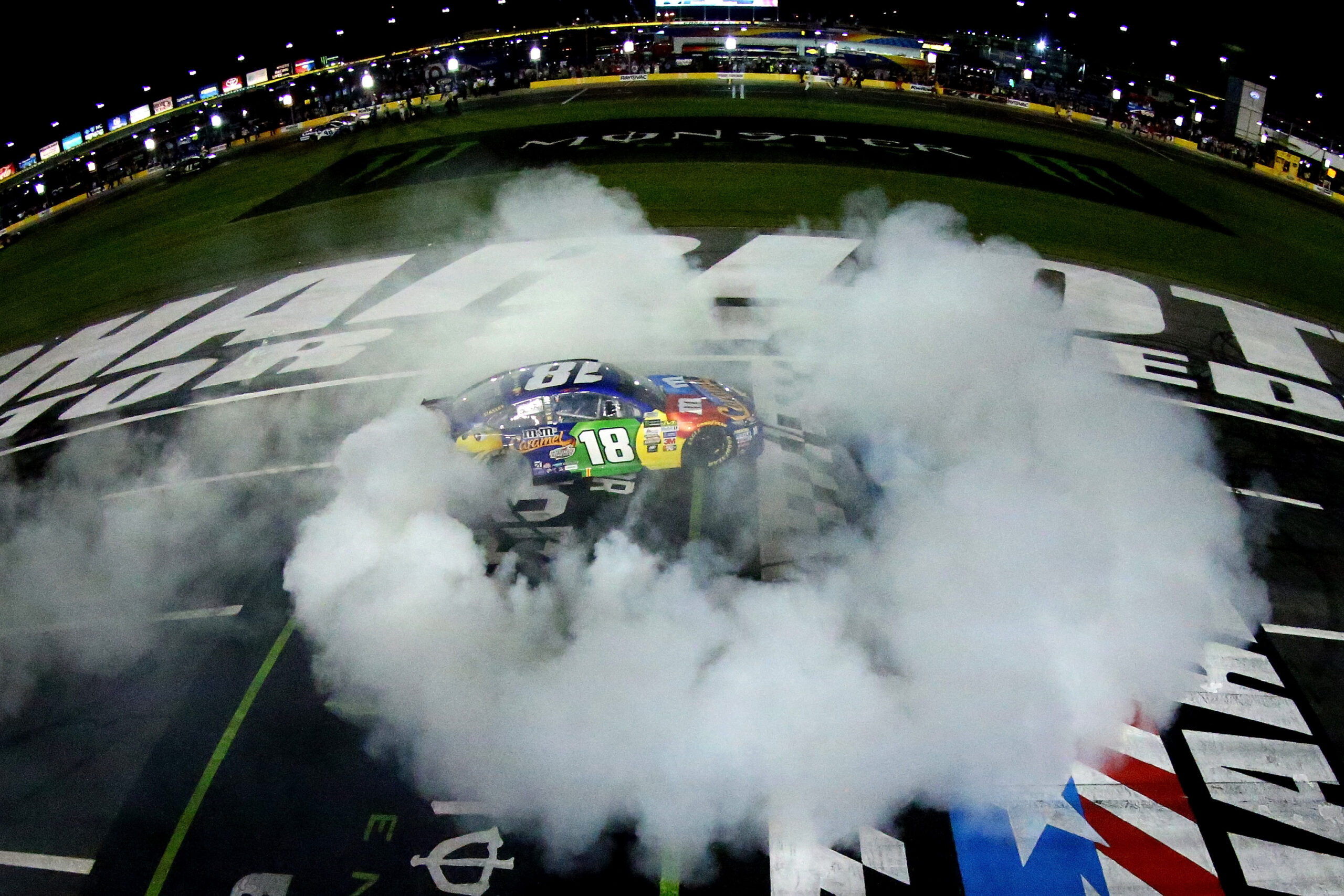Ricky Rudd
Rudd is probably the best overall driver on the ballot. Bobby Labonte comes pretty close, being one of only two drivers to win XFINITY Series and Cup Series championships, but Rudd had more seasons as a competitive driver. Davey Allison also makes a strong argument, but it becomes an argument of being good for twenty years versus being great for five years. I’ll always take being good for twenty years.
Rudd’s 788 consecutive starts streak was recently broken by Jeff Gordon, but Rudd’s streak might be much more impressive considering that his was over more years, over more generations of cars, and with significantly different owners and manufacturers.
Rudd’s streak of 16 consecutive seasons with at least one victory was also recently tied with Jimmie Johnson, who only needs to win one race in 2018 to break it. But Johnson has had the advantage of racing for Rick Hendrick his entire career, while Rudd drove for everybody during his streak between Hendrick, Kenny Bernstein, and even himself.
All-in-all, Rudd raced for 11 different owners in at least mostly full-time competition, a large amount for such a longstanding driver. It’s hard for a driver to really get a rhythm with a team if he isn’t racing for them at the end of the season, so who knows how great Rudd could have been if he had been able to stick with one team for five or 10 seasons?
Of those 11 different owners, only two times in Rudd’s career was he ever in equipment that could win himself a championship. Rudd drove a year for DiGard but the team struggled to do anything, and Rudd left them at the end of the 1981 season to drive for Richard Childress. This was before Childress was a championship winning team, which was also the same situation when Rudd joined with Hendrick in 1990. In 2000, Yates hired Rudd to race the No. 28 and Rudd, at age 43 and 44, had the two best seasons in his career, finishing fifth in points in 2000 and following that up with a fourth in 2001.
I remember one time listening to Bill Simmons talking about how we were living in a reality where Steve Young wasn’t relatively successful, and that there were probably alternative realities where Young got the right breaks and became the greatest quarterback of all time. In some ways, Rudd is in the same boat. If Childress had stuck with Rudd instead of hiring Dale Earnhardt Sr., things would have been different as the team morphed into a powerhouse. Ditto with Hendrick when Rudd left after a few years to start his own team. Even if Yates had hired him to effectively replace Ernie Irvan instead of Dale Jarrett, who knows just how successful Rudd could have been?
Even with all of these “What if?” scenarios, Rudd’s consistency and versatility has him on my ballot over the rest of the drivers nominated, with one exception.
Red Byron
Red Byron was one of the very first stars of stock car racing, and one of the few who continued their driving career after World War II. Before Byron were Lloyd Seay, Roy Hall, and Bill France in the 1930s, dominating and winning most of the major stock car races of the day. But Seay was killed in 1941 just hours after winning the annual Labor Day event at Lakewood speedway during an argument with a cousin over moonshine, Hall had trouble with the law, and France became engrossed with the promoting side of the sport.
So when NASCAR began in 1948, there were three star drivers: Byron, Fonty Flock, and Bob Flock. Although future superstars such as Lee Petty, Curtis Turner, and Fireball Roberts were around, they all had just begun their career and weren’t the fan draws they ended up becoming. And with both Flock brothers treating racing as more of a fun hobby to do after hauling moonshine all night, the responsibility of being NASCAR’s first star driver was left to Byron.
Byron was the first driver to really look at racing as a career, not something fun to do on the weekend. He typically drove with his head, conserving the fragile cars of the day to make it the entire race instead of dropping out early. He was also one of the first strategists in the sport, always knowing when to pit and why. Although I’ve never read anything about Lee Petty or Byron interacting, it’s hard to imagine the rookie Petty not taking these cues from Byron for his own somewhat similar driving style.
Of course, there are two facts about Byron which most modern fans may know him for. The first being that he was the very first Cup Series champion, and the second being that he was a wounded in combat; some Japanese shrapnel was lodged in his hip during a failed air mission in the war, requiring a special clutch pedal for his largely limp left foot. Byron had to retire from racing early due to both this injury and a bad heart.
The second was that Byron was also the first NASCAR champion, winning the Modified Series title in 1948 and also winning the very first NASCAR-sanctioned race at Daytona Beach in 1948. Byron’s stats aren’t that amazing, but a lot of his accomplishments came in the two years following the war in unrecorded, non-NASCAR races. It’s easy to say “But non-NASCAR accomplishments shouldn’t be part of the Hall of Fame discussion,” but Byron’s owner, Hall of Famer Raymond Parks, enjoyed most of his success in the 1930’s, cousins Seay and Hall driving his cars often after running moonshine the night before.
Ken Squier
Squier was the most iconic announcer in NASCAR history. Although it’s likely Mike Joy has covered more races and Chris Economaki was the first reporter, period, to primarily cover motorsports, nobody has ever made as many iconic calls as Squier.
As a commentator, it’s very easy to fall into the trap of making yourself the biggest part of the show. Howard Cosell, especially in his latter years, was pretty guilty of this. Darrell Waltrip and at times Rick Allen also suffer from this problem. But with Squier, he added to the moment, never taking it over or making the viewer remember he was the one calling the race.
Squier’s style was a simple, impactful one. He wasn’t going to talk a mile a minute, but instead made his words matter in an eloquent way. Imagine a grandparent telling a story to their grandkid. An announcer on television is never supposed to talk about everything happening on screen at one time, especially in auto racing when there’s a ton of things generally happening off-screen. Instead, a TV announcer is supposed to verbally paint a picture for the setting of whatever is being shown on screen, to bring emotion to it. Squier was the master at that.
How many times have there been highlight reels with “There’s a fight, between Cale Yarborough and Donnie Allison,” from Squier’s call of the 1979 Daytona 500? Or “and for the 19th time, lady luck… deals a bad hand, to Earnhardt,” after Dale Earnhardt Sr. barreled rolled out of the 1997 Daytona 500? Squier’s calls made the mundane notable and the notable iconic. The finish of a race always had an epic feeling to it whenever Squier was on the call.
Possibly the best indicator to me that Squier was really that great an announcer was the past two Southern 500s. In both races, Squier returned to the booth with Ned and Dale Jarrett as part of NBC’s “throwback” coverage and didn’t seem to regress that much as an announcer. It’s hard to take a near 20 year layoff and come back to do some announcing, even if it’s for about half an hour. But Squier, although a tad bit slower in his call, was still just as great in his role. Although it would be hard to argue for Squier to become the first strictly media member if Economaki was on the ballet, as Economaki basically created American racing coverage in print media, for now Squier is really the best of the rest of the candidates.







